Ukrainian attack on Russian bombers shows how cheap drones could upset global security
By Julien de Troullioud de Lanversin | June 5, 2025
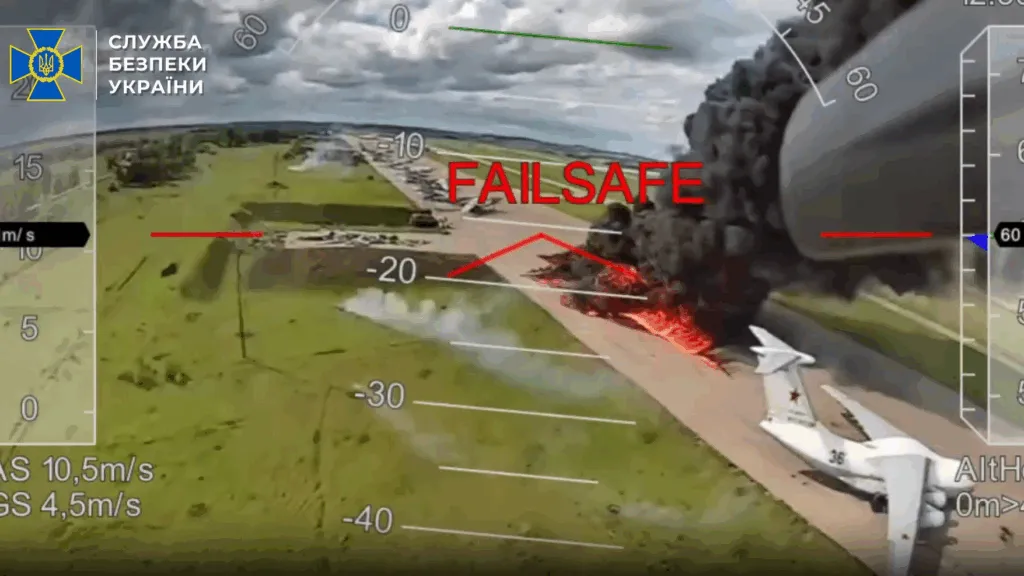 A screenshot from a video footage of the June 1 drone attack on Russian airfields released by Ukraine's Security Service. Satellite imagery confirmed that several strategic bombers were destroyed in at least two airfields, Belaya Airbase in Russia's far East and Olenya Airbase near Finland. (Credit: SBU)
A screenshot from a video footage of the June 1 drone attack on Russian airfields released by Ukraine's Security Service. Satellite imagery confirmed that several strategic bombers were destroyed in at least two airfields, Belaya Airbase in Russia's far East and Olenya Airbase near Finland. (Credit: SBU)
On Sunday, social media started broadcasting videos of airfields shrouded with columns of smoke and parked airplanes on fire. These were not common airplanes but Russian strategic bombers capable of delivering nuclear weapons virtually anywhere on the globe. Behind these attacks were small drones, like those used to capture scenic social media videos, remotely operated by Ukrainian pilots.
The day after, some Russian media and influential figures called for retaliation with nuclear strikes. On Wednesday, Russian President Vladimir Putin reportedly said in a phone call with President Donald Trump that he planned to retaliate against Ukraine for its surprise attack. According to a reading of the Russian nuclear doctrine, the Ukrainian attacks could technically prompt a nuclear retaliation by Russia.
This military operation is the latest illustration of how cheap, accessible drones are changing modern warfare. It also exposed another reality: Drones will wreak havoc on global stability if nobody controls their proliferation.
A turning point. Last week’s drone operation, which the Ukrainian military called “Operation Spider’s Web” and which was 18 months in the making, looked like it came straight out of a James Bond movie: More than a hundred first-person view drones were secretly shipped inside containers on commercial trucks sent toward locations deep inside Russian territory, nearby highly sensitive military airfields. With just a click from operators based in Ukraine, all containers’ roofs simultaneously opened, and drones navigated to their targets to unleash destruction. The number of aircraft damaged or destroyed is still unclear. (Ukrainian authorities claim 41 aircraft were destroyed.) What is certain, however, is that several of Russia’s most critical and advanced strategic nuclear-capable bombers were damaged.
The drones were likely “Osa” quadcopters, 13-15 inches in length and developed and assembled in Ukraine at a cost of around $600 to $1000 each, according to an early analysis of the attack by the Center for Strategic and International Studies. Each drone likely carried an explosive payload of about 3.2 kilograms and detonated on impact with the targeted airplanes. To communicate with the drones, Ukrainian operators are believed to have used Russian mobile telecommunication networks, such as 4G and LTE connections. It is also likely that the drones were supported by artificial intelligence systems to give them autonomy in case the telecommunication with the operators would break, and to assist in precisely targeting identified weak spots on the airplanes.
The June 1 Spider Web operation likely marks the largest attack on a nuclear-armed state’s nuclear assets to date, one that was executed using laptop-sized drones. It also stands as the most significant demonstration of drones’ ability to penetrate deeply into heavily defended territory with significant strategic impact. While this represents an operational success for Ukraine, it is still unclear whether and how the drone attack will impact Russia’s conduct of the war. Some fear this operation could lead to a nuclear escalation.
For decades, major powers have pursued so-called strategic stability, a situation in which nuclear adversaries are deterred from launching direct military attacks against one another due to their mutually destructive nuclear capabilities. States also realized that continuing to develop more weapons in a never-ending arms race was costly and increased the risks of conflicts. This is why they agreed to engage in arms control and arms reduction, while making sure to maintain strategic stability.
But this fragile balance between great powers has always been vulnerable to new and disruptive technologies such as microchips, precision-guided missiles, or cybertechnology. Drones, especially small and cheap ones, represent a unique challenge to this balance, one that often evades the grasp of major powers.
‘Cheap drone’ warfare. Drone technology is not new. It was already used during the Cold War and has been a hallmark of the war in Iraq, with its precision strikes in the middle of the desert. Military powers such as the United States, Russia, and China have long invested in and developed expensive, highly advanced drones for various missions. Enhanced by artificial intelligence and increasing autonomy, modern drones have already promised to transform warfare by enabling operations without risking human pilots and possibly transforming the decision-making of those using them.
Things took another turn in the 2010s.
Enabled by advances in microelectronics and battery technologies, smaller and cheaper drones started to be mass-produced for commercial purposes by companies like DJI and others. It did not take long for the military to adapt these drones for warfare purposes. Combined with cutting-edge telecommunication technology, these smaller drones could form intelligent swarms and offer real-time video feeds to their operators.
This time, the nuclear powers were not the only ones to engage in the arms race. Unlike other delivery systems, such as missiles or jet fighters that have significantly higher entry costs, smaller states and even non-state actors could acquire inexpensive drones and transform them into rudimentary but effective “air force” and delivery systems.
The simplicity of their acquisition, use, and diffusion into the hands of actors of various sizes around the globe is what makes cheap drones such a game-changer for modern warfare—and now also for global security.
These inexpensive drones enable smaller states to conduct effective asymmetric warfare against more powerful opponents. It is in great part thanks to its drone force that Ukraine has stood its ground against the world’s second-largest military since 2022. Reports indicate that small drones may have contributed to up to 70 percent of Russian equipment losses so far in the conflict—and this number is likely to become higher if the war continues, given Ukraine’s rapidly growing drone production capacity.
More crucially, cheap drones can be used to sabotage well-defended strategic assets. In what is often described as terrorist acts, Yemen’s Houthis have used drones to attack commercial and military vessels in the Red Sea and the Gulf of Aden, thereby disrupting about 12 percent of global trade in 2024. Houthis’ drones also destroyed Saudi Arabia’s critical oil infrastructure, disrupting 5 percent of global oil supply in 2019.
But the most striking instance of their strategic reach remains the Ukrainian operation of June 1. This operation also foreshadows a dangerous shift in global stability.
Risk of escalation. Historically, only major nuclear powers had effective means to inflict damage on the nuclear capabilities of other major powers. And for most nuclear-armed states, an attack on their nuclear capabilities, even a conventional one, called for nuclear retaliation. To avoid nuclear escalation, nuclear powers have carefully crafted doctrines, strategies, and agreements between themselves to create predictability and increase strategic stability. But to a certain extent, this system of balance was not designed with the expectation that smaller actors could threaten critical nuclear assets of the nuclear-armed states.
Smaller states with no nuclear capabilities and less familiar with the game of strategic stability, like Ukraine, might not fully realize the direct or indirect risk of nuclear escalation that their drone operations could entail. More alarming, non-state actors could also potentially actively seek to initiate a nuclear escalation between nuclear adversaries with drone-enabled false flag operations.
Discussions around drone regulation in war often center around their ethical uses and their level of AI-powered autonomy, which are certainly crucial issues to tackle. But states must also recognize the highly disruptive impact that cheap and widely accessible drones can have not only on warfare but on global security and stability.
One way forward is to implement strict export control and purchase regulations on small drones, such as those implemented for small firearms. Such policies will inevitably collide with the booming industry and market of small, cheap drones that are increasingly popular for commercial purposes and leisure activities. But states will need to work on some form of control of drone export and weaponization, lest they are willing to risk more nuclear crises.
Together, we make the world safer.
The Bulletin elevates expert voices above the noise. But as an independent nonprofit organization, our operations depend on the support of readers like you. Help us continue to deliver quality journalism that holds leaders accountable. Your support of our work at any level is important. In return, we promise our coverage will be understandable, influential, vigilant, solution-oriented, and fair-minded. Together we can make a difference.
Keywords: AI, Russia, Russia-Ukraine war, Ukraine, Vladimir Putin, arms control, drone warfare, escalation, export control, strategic bombers
Topics: Nuclear Risk


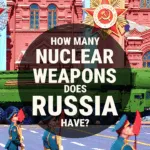






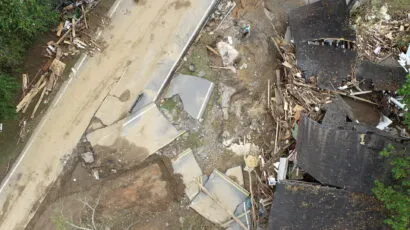
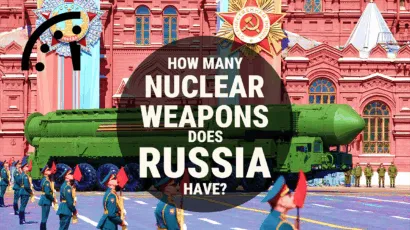
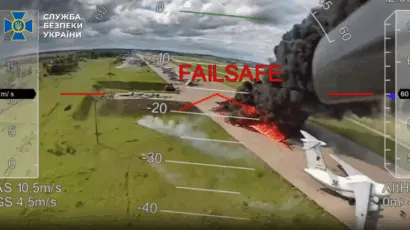

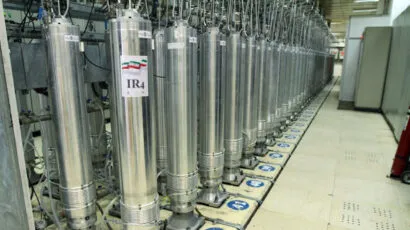


The Russian strategic bombers were being used by Russia to target Ukraine’s cities and population centres. Ukraine is perfectly entitled to go after these assets in defence of their population.
“It is also likely that the drones were supported by artificial intelligence systems to give them autonomy in case the telecommunication with the operators would break, and to assist in precisely targeting identified weak spots on the airplanes.“
This is a pointlessly speculative statement founded on nothing and wholly unreflective of reality. The notion that Ukraine has developed ultra high efficiency AI capable of autonomous attack and custom hardware to integrate into consumer UAVs is preposterous. It also takes away from the inventiveness and resilience of the Ukrainians at their war fighting efforts.
The world should have immediately stepped in to help Ukraine stop its attacker. The world has had 3+ years to step and and DO SOMETHING to as stop Russsia. Had they done so, this drone attack by Ukraine would never have happened, thereby minimising the risk. Like Hitler admitted: had France and the UK stopped his army when it crossed into the demilitarised Saar region in 1936, he would never have dared proceed with his war plans. Had the West/NATO stepped up immediately in February 2022 to stop Putin, it would all have been over inside a week.
The constant bombardments against Ukrainian civilians, apartments, schools, churches, and other infrastructure should even more upset international security.
Strict export control and purchase regulations won’t cut it. It took Ukraine only three years to develop, refine, and deploy drones capable of massive destruction starting with off the shelf components from China – any country with the ability to order parts from China can do the same. Secondly, advances in solid state batteries have already reached 500 Wh/kg – at today’s higher cost targeted at drones and Unmanned Aerial Vehicles – so tomorrow’s payload, range, and speed will be on another level.
OK article until the last paragraph.
Pandora’s drones are completely utterly and irretrievably out of their box.
I have never built a drone BUT I could do so from scratch. Having access to motors and props would be nice BUT even those are entirely buildable.
Sound unlikely? – I’m 74 years old with a lifetime in electronic design and embedded programming. There are a vast number of people with greater capability than I have.
Drones can be built from a “standing start” needs must, or from whatever technology level is available.
I don’t see how removing these vital assets from the hands of smaller states will have any effect other than to encourage rogue powers such as Russia to invade and terrorize their less powerful neighbors. If you limit the asymmetric warfare capabilities of smaller states, you are not creating a safer world, only one which is safer for large rogue states wishing to absorb their smaller, weaker neighbors.
this drone attack shows futility of “$100M advanced fighters”, drones are agile, hard to see on radar and cheap. think how many drones could be deployed for cost of just ONE next gen fighter. this is the new way of warfare and getting stuck in old school mentality will not bode well. with advancements of AI even manned a/c will be a thing of the past. without a manned cockpit a/c can be lighter and take far more g’s than manned a/c and if one goes down there is no human element to “worry” about.
I think that if Ukraine continues to fight, and continues to show successes, Putin will increasingly resort to non-nuclear, non-conventional but “novel” weapons to fight his war. This means that Europe and NATO will continue to suffer in novel ways, and be pressed to increase spending on defense. In the US, the leader will be pressed to help NATO to gear up but will resist supporting them. The isolationist tribalism in the US is now very strong, and there will be a reluctance to get involved in another “European” war. We will see marches protesting help for Ukraine. But as before WW2, the war will… Read more »
As with any war, the Ukraine war needs to stop, there’s no question about it. Putin started it, however, it would probably be worthwhile to take into account that we had a similar situation with the Cuban Missile Crisis. We got Russia to back down. (Or perhaps to Russia’s credit, they did the right thing and backed down) It’s reasonable for Russia to believe that NATO membership for Ukraine could, conceivably, at some point, lead to nuclear weapons being stationed there. We didn’t want nuclear weapons in Cuba. Therefore, it seems fair to me to reciprocate by disallowing Ukraine membership… Read more »